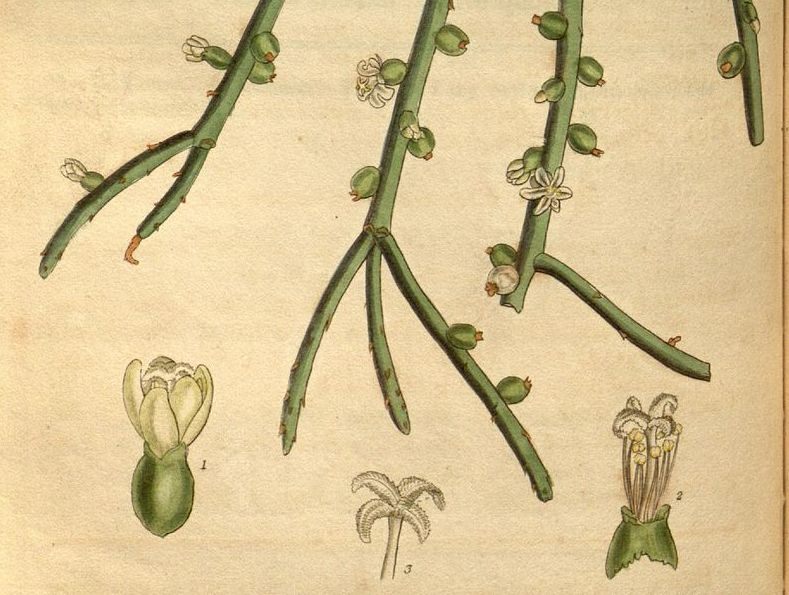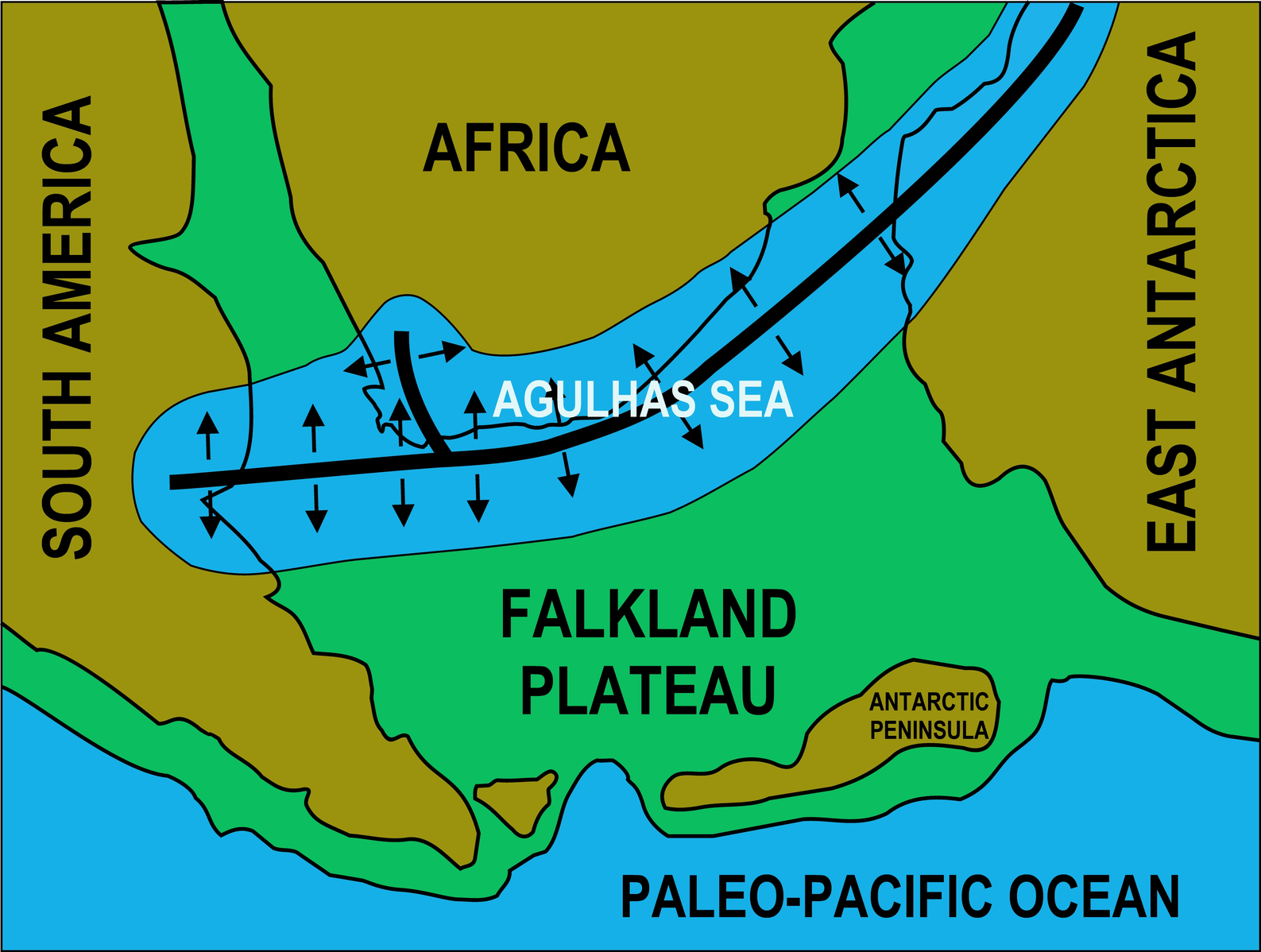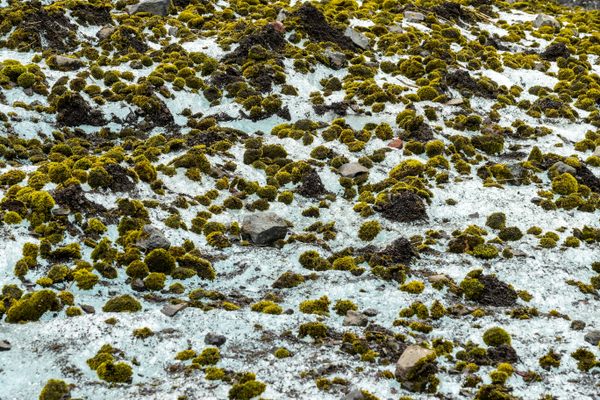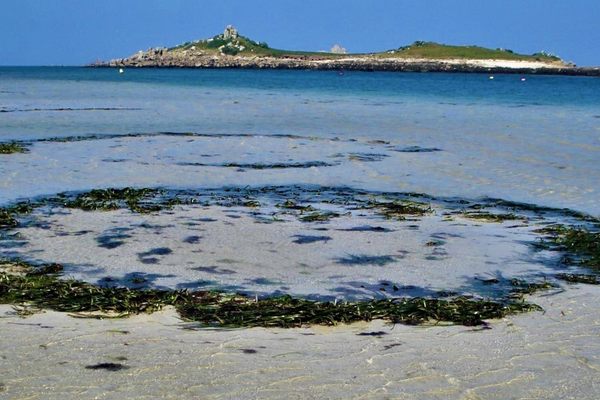The Mystery of the World’s Least American Cactus
How did Rhipsalis baccifera cross the ocean?

By cactus standards, Rhipsalis baccifera is, for the most part, average. Sure, it has long, spindly stems that can grow up to 30 feet long, and hang down from the canopy like monstrous green dreadlocks. And yeah, it’s an epiphyte, so it survives by sucking moisture from the very air. But in a family flush with plants that grow six-inch spines, can go two years without water, and emit psychedelics to drive off animals, these attributes are relatively small potatoes.
But there’s one very special thing about R. baccifera—it’s the only species of cactus that is found naturally outside of the Americas. Unlike all of its relatives, R. baccifera has grown wild in Africa and India at least since botanical record-keeping began. This plant—also known as the “Mistletoe Cactus” or the “Spaghetti Cactus” for its white berries and dangling stems—has traveled thousands of miles away from all of its brethren. And despite decades of study, scientists still aren’t quite sure how it pulled this off.

If you’re looking for cacti in their native habitat, you’d be best served by sticking to the Western hemisphere. With the exception of our friend R. baccifera, “cacti occur naturally from just south of the Arctic Circle in Canada to the tip of Patagonia in South America,” write Jon P. Rebman and Donald J. Pinkava in Florida Entomologist. Thanks to their legendary survival strategies, cacti can hack it in a broad variety of altitudes and climates, from bone-dry valleys to dripping rainforests.
R. baccifera can be found growing wild from mid-Argentina through Central America and up into the heart of Florida. But it’s also endemic in tropical Africa, Madagascar, and Sri Lanka. How did it end up all those places? As the botanist Ali Eyres explains on the Reading University Tropical Biodiversity blog, experts have come up with a number of competing theories, some more likely than others, but all somewhat improbable.
In the first scenario, R. baccifera followed the path of many other plants—its seeds got a lift from hungry, migrating birds. Birds are known to gobble up fruits, digest them over the ocean, and excrete the seeds far away. (This is how olives got to Australia, and tropical “cardinal’s hats” to temperate Europe.) R. baccifera’s seeds are held by plump, tasty white berries—thus its nickname, the “Mistletoe Plant.”

The prevailing theory among many biogeographers is that, at some point in the past, a long-flying species of bird took a liking to these berries, snacked on them, and then migrated to southern Africa, where they passed the seeds and begat a new plant. From there, more birds spread the cactus to more places, until it had the broad, unusual range we see today.
There are some issues with this theory. For one, it’s not clear what birds could have pulled this off. As J. Hugo Cota-Sánchez and Márcia C. Bomfim-Patrício point out in Polibotanica, “frugivorous birds are not able to cross the Atlantic Ocean from South America to Southern West Africa.” They go on to explain that while a tropical storm or ocean currents might have pushed the seeds from shore to shore on their own, that’s also a rather long shot.
This brings us to the second possibility: the “continental breakup” theory, first advanced by botanical detectives in the early 20th century. In this scenario, neither R. baccifera nor birds had to travel thousands of miles. The Earth did it for them.

As Phillip Maxwell sums up in the New Zealand Cactus and Succulent Journal, there’s no need to puzzle out dispersal mechanisms if we simply assume that our heroic cactus was around during the breakup of the supercontinent of Gondwana, about 184 million years ago. In this scenario, as Gondwana separates into what we now know as Africa and South America, some R. baccifera is left on each side of the divide, slowly drifting apart until—millions of years of tectonic shifts later—they’re in completely different time zones.
This theory has also gotten pushback: while no one is certain when cacti evolved, most estimates put the date around five to ten million years ago, far too late to have experienced Gondwana. And if they did show up early enough to hang out on the supercontinent, it’s strange that no other species of the hardy plant family managed to make it to Africa and India.
The third and final scenario is a little more human. In the 1980s, several biologists floated the idea that R. baccifera might have crossed the ocean with the help of sailors, potentially 16th century merchants taking on the East India Route. Before they shoved off from Brazil, this theory goes, they gathered up one of the rainforest’s most beguiling plants, R. baccifera, which dangled gracefully from the trees and, thanks to its ability to survive without soil, could easily survive the journey.

They used it to brighten up the ship’s quarters, and then left it when they hit port again in Africa. While Maxwell calls this theory “risible,” pointing out that R. baccifera isn’t actually that eye-popping and doesn’t occur near African port cities, Cota-Sánchez and Bomfim-Patrício cite it as the most likely.
We may never know exactly how R. baccifera became such a well-traveled cactus. But today, as crossing borders becomes ever more fraught, it’s worth remembering that with the right support, even a humble epiphyte can make it pretty far.
Naturecultures is a weekly column that explores the changing relationships between humanity and wilder things. Have something you want covered (or uncovered)? Send tips to cara@atlasobscura.com.
















Follow us on Twitter to get the latest on the world's hidden wonders.
Like us on Facebook to get the latest on the world's hidden wonders.
Follow us on Twitter Like us on Facebook